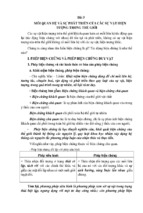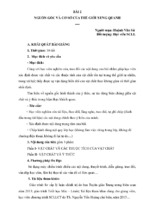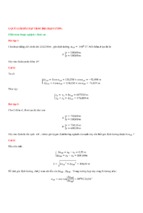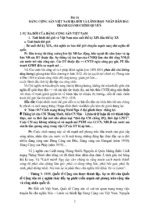scelibrary.org by RMIT UNIVERSITY LIBRARY on 01/03/19. Copyright ASCE. For personal use only
ICCREM
2018
Analysis of Real Estate and
the Construction Industry
Edited by
Yaowu Wang; Yimin Zhu;
Geoffrey Q. P. Shen; and
Mohamed Al-Hussein
Downloaded from ascelibrary.org by RMIT UNIVERSITY LIBRARY on 01/03/19. Copyright ASCE. For personal use only; all rights reserved.
ICCREM 2018
ANALYSIS OF REAL ESTATE AND THE
CONSTRUCTION INDUSTRY
PROCEEDINGS OF THE INTERNATIONAL CONFERENCE ON
CONSTRUCTION AND REAL ESTATE MANAGEMENT 2018
August 9–10, 2018
Charleston, South Carolina
SPONSORED BY
Modernization of Management Committee
of the China Construction Industry Association
The Construction Institute
of the American Society of Civil Engineers
EDITORS
Yaowu Wang
Yimin Zhu
Geoffrey Q. P. Shen
Mohamed Al-Hussein
Published by the American Society of Civil Engineers
Downloaded from ascelibrary.org by RMIT UNIVERSITY LIBRARY on 01/03/19. Copyright ASCE. For personal use only; all rights reserved.
Published by American Society of Civil Engineers
1801 Alexander Bell Drive
Reston, Virginia, 20191-4382
www.asce.org/publications | ascelibrary.org
Any statements expressed in these materials are those of the individual authors and do not
necessarily represent the views of ASCE, which takes no responsibility for any statement
made herein. No reference made in this publication to any specific method, product, process,
or service constitutes or implies an endorsement, recommendation, or warranty thereof by
ASCE. The materials are for general information only and do not represent a standard of
ASCE, nor are they intended as a reference in purchase specifications, contracts, regulations,
statutes, or any other legal document. ASCE makes no representation or warranty of any
kind, whether express or implied, concerning the accuracy, completeness, suitability, or
utility of any information, apparatus, product, or process discussed in this publication, and
assumes no liability therefor. The information contained in these materials should not be used
without first securing competent advice with respect to its suitability for any general or
specific application. Anyone utilizing such information assumes all liability arising from such
use, including but not limited to infringement of any patent or patents.
ASCE and American Society of Civil Engineers—Registered in U.S. Patent and Trademark
Office.
Photocopies and permissions. Permission to photocopy or reproduce material from ASCE
publications can be requested by sending an e-mail to
[email protected] or by locating a
title in ASCE's Civil Engineering Database (http://cedb.asce.org) or ASCE Library
(http://ascelibrary.org) and using the “Permissions” link.
Errata: Errata, if any, can be found at https://doi.org/10.1061/9780784481745
Copyright © 2018 by the American Society of Civil Engineers.
All Rights Reserved.
ISBN 978-0-7844-8174-5 (PDF)
Manufactured in the United States of America.
ICCREM 2018
iii
Downloaded from ascelibrary.org by RMIT UNIVERSITY LIBRARY on 01/03/19. Copyright ASCE. For personal use only; all rights reserved.
Preface
We would like to welcome you to the 2018 International Conference on Construction and Real
Estate Management (ICCREM 2018). Harbin Institute of Technology, Louisiana State University,
Hong Kong Polytechnic University, University of Alberta, Luleå University of Technology,
Heriot-Watt University, Marquette University, Karlsruhe Institute of Technology, Guangzhou
University. The Conference is a continuation of the ICCREM series which have been held annually
since 2003.
The theme for this conference is “Innovation Technology and Intelligent Construction”. It
especially highlights the importance of innovation technology for construction engineering and
management. The conference proceedings include 138 peer-review papers covered fourteen
important subjects. And all papers went through a two-step peer review process. The proceedings
of the congress are divided into four parts:
Innovative Technology and Intelligent Construction
Sustainable Construction and Prefabrication
Analysis of Real Estate and Construction Industry
Construction Enterprises and Project Management
On behalf of the Construction Institute, the American Society of Civil Engineers and the 2018
ICCREM Organizing Committee, we welcome you and wish you leave with a wonderful
experience and memory at ICCREM 2018.
Professor Yaowu Wang
Professor Yimin Zhu
Harbin Institute of Technology
Louisiana State University
P. R. of China
USA
Acknowledgments
Organized by
Harbin Institute of Technology, P.R. China
Louisiana State University, USA
Hong Kong Polytechnic University, P.R. China
University of Alberta, Canada
Luleå University of Technology, Sweden
© ASCE
ICCREM 2018
iv
Heriot-Watt University, UK
Marquette University, USA
Karlsruhe Institute of Technology, Germany
Downloaded from ascelibrary.org by RMIT UNIVERSITY LIBRARY on 01/03/19. Copyright ASCE. For personal use only; all rights reserved.
Guangzhou University, P.R. China
Executive Editors
Yue Cao
Zhuyue Li
Xuewen Gong
Jia Ding
Xianwei Meng
Mengping Xie
Jiaqing Chen
Tianqi Zhang
Yushan Wang
Chong Feng
Xiangkun Qi
Jingjing Yang
Xiaoting Li
Yu Hua
Wenting Chen
Xiaowen Sun
Hang Shang
Shiwei Chen
Tongyao Feng
Conference website: http://www.iccrem.com/
Email:
[email protected]
Conference Committee
Committee Chairs
Prof. Yaowu Wang, Harbin Institute of Technology, P.R. China
Prof. Geoffrey Q.P. Shen, Hong Kong Polytechnic University, P.R. China
Conference Executive Chair
Prof. Yimin Zhu, Louisiana State University, USA
Conference Co-Chairs
Prof. Mohamed Al-Hussein, University of Alberta, Canada
Director Katerina Lachinova, Construction Institute of ASCE.(ASCE members), USA
Prof. Thomas Olofsson, Luleå University of Technology, Sweden
Prof. Ming Sun, Heriot Watt University, UK
Prof. Yong Bai, Marquette University, USA
Prof. Kunibert Lennerts, Karlsruhe Institute of Technology, German
Prof. Xiaolong Xue, Guangzhou University, P.R. China
© ASCE
ICCREM 2018
Organizing Committee and Secretariat
General Secretariat
Asso. Prof Qingpeng Man, Harbin Institute of Technology, P.R. China
Downloaded from ascelibrary.org by RMIT UNIVERSITY LIBRARY on 01/03/19. Copyright ASCE. For personal use only; all rights reserved.
Deputy General Secretariat
Asso. Prof. Hongtao Yang, East China University of Science and Technology, P.R. China
Asso. Prof. Xiaodong Li, Tsinghua University, P.R. China
Asso. Prof. Chengshuang Sun, Beijing University of Civil Engineering and Architecture,
P.R. China
Committee Members
Dr. Yuna Wang, Harbin Institute of Technology, P.R. China
Dr. Tao Yu, Harbin Institute of Technology, P.R. China
Mr. Yongyue Liu, Harbin Institute of Technology, P.R. China
Mr. Zixin Han, Harbin Institute of Technology, P.R. China
Mr. Zhenzong Zhou, Harbin Institute of Technology, P.R. China
© ASCE
v
ICCREM 2018
vi
Downloaded from ascelibrary.org by RMIT UNIVERSITY LIBRARY on 01/03/19. Copyright ASCE. For personal use only; all rights reserved.
Contents
Indemnification Housing Policy Satisfaction of Low and Middle-Income
Group in China: Empirical Study Based on CGSS 2015 Data ................................................ 1
Qiru Ma, Yongxiang Wu, and Zhuowei Wang
Labor Productivity in Construction Industry: Investigating the Influence
of Internal Psychosocial Stressors .......................................................................................... 10
Ahsen Maqsoom, Abdul Mughees, Ammar Khalid Khan,
and Muhammad Imran Arif
Exploring the Evolution Trends of Urban Resilience Research ............................................ 18
Liang Wang and Xiaolong Xue
A General Overview of the Impact of Global Financial Crisis on
Construction Industries .......................................................................................................... 28
Baffoe-Twum Edmund, Huojun Yang, and Asa Eric
Endogenous Impact of Urban Residents’ Consumption and Housing
Price: A Case Study in Harbin City ....................................................................................... 39
Zhuowei Wang, Yongxiang Wu, and Qiru Ma
Work-Family Conflict in Construction Workers in First Tier Cities:
A Cross-Sectional Study in Beijing City................................................................................. 47
Ziyang Song, Xiaodong Li, and Yifan Geng
A Study of Harmonious Residential Construction Systems Using
Structural Equation Modeling ................................................................................................ 54
Xiaodong Yang, Jiayu Zhang, and Yongxiang Wu
Study of the Allocation of Basic Urban Residential Land Supply
from the Perspective of Justice and Fairness ......................................................................... 67
Ke Lu, Ruirui Luo, and Wei Zhang
The Development of Construction Industrialization in China: From
Government Policies Perspective ............................................................................................ 77
Ankang Ji, Xiaolong Xue, Yuna Wang, Shu Shang, Wenbo Huangfu,
Ting Luo, and Yudan Dou
Marketing Strategy Analysis of Commercial Real Estate Project
Park I of Kaili City.................................................................................................................. 85
Yanju Liang and Zhiguo Gao
The Fluctuation Research of Chinese Regional Real Estate Cycle
from 1996 to 2015 .................................................................................................................... 91
Tingting Yang, Lin Wang, Liu Wu, and Lifang Huang
© ASCE
ICCREM 2018
Downloaded from ascelibrary.org by RMIT UNIVERSITY LIBRARY on 01/03/19. Copyright ASCE. For personal use only; all rights reserved.
Empirical Study of Risk Factors in Financial Condition of Chinese
Real Estate Listed Companies ................................................................................................ 98
Bainan Yang, Liang Liang, and Yanru Gao
Does Land Finance Matter the Tertiarization of Industry Structure?
A Perspective Based on Urban Scale .................................................................................... 108
Zhifeng Wang, Shuo Meng, Hao Wang, and Junhua Chen
Study on the Real Estate Bubble Early Warning from the Perspective
of System Dynamics .............................................................................................................. 116
Yunbo Li and Wenting Chen
Analysis of Real Estate Inventory of Changchun Based on System
Dynamics Method ................................................................................................................. 125
Xiaoxin Ding and Peijia Xu
Measurement of CSR in the Construction Industry ............................................................ 137
Ying Jiang and Xiaolong Xue
Factors Affecting the Price of Second-Hand Housing in First-Tier
Cities: Empirical Analysis Based on Panel Data .................................................................. 143
Xuefeng Zheng and Fan Dong
The Efficiency of Chinese Regional Construction Industry Based
on DEA Model: An Empirical Study from 2006 to 2016 ..................................................... 154
Hua Su, Yulong Li, Fanchun Meng, and Zhou Zhou
Multi-Stakeholder Risk Analysis for Construction Industry
Industrialization: A Review .................................................................................................. 163
Mengping Xie, Yuna Wang, and Kaijun Yang
Study on the Efficiency Estimation for Chinese Construction Industry
through Three-Stage DEA Model ......................................................................................... 173
Wei Zhang and Xisheng Zhu
Econometric Analysis on Chinese Housing Bubble: Evidence from
National and Municipal Panel Data ..................................................................................... 181
Junhua Chen, Zhiyuan Zhao, Hao Wang, and Zhifeng Wang
Study on the Efficiency Differences and Influencing Factors of China's
Regional Construction Industry ........................................................................................... 189
Shen Zhong, Lei Du, and Yuqi Liu
Research on Administrative Approval Reform in Engineering
Construction Field: Take Guangzhou as an Example ......................................................... 198
Sicong Zhao, Huabo Duan, Bei Wang, and Ruyu Feng
© ASCE
vii
ICCREM 2018
Downloaded from ascelibrary.org by RMIT UNIVERSITY LIBRARY on 01/03/19. Copyright ASCE. For personal use only; all rights reserved.
Study on Radiation Effects of Central Cities in Beijing-Tianjin-Hebei
Region .................................................................................................................................... 203
Renhui Liu and Haizheng Wu
Measuring the Efficiency of Construction Industry in China Based on
DEA and Malmquist Index ................................................................................................... 212
Yanyan Fan, Zhiye Huang, and Yuan Chang
Empirical Research on the Effect of the Business Tax (BT) to Value-Added
Tax (VAT) Reform on the Financial Performance of Listed Real Estate
Companies ............................................................................................................................. 219
Wenguo Ai and Shunyin Fan
Study on Cities’ Housing Price Fluctuation and Regional Differentiation
Based on the Panel Data of 35 Cities in China ..................................................................... 226
Ruoxing Chen, Jialei Xia, and Guanghong Ma
The Moderate Investment Scale Study of Real Estate Promoting Economic
Growth ................................................................................................................................... 238
Peili Guo, Xiaojuan Zhang, Jiwei Zhu, and Lingxia Sun
Labor Force Production Efficiency Evaluation of American Construction
Industry Based on the DEA-Malmquist Model from 2006–2016 ........................................ 247
Jie Lin, Yulong Li, Chao Wang, and Bingzhen He
Research on the Causes and Solutions of “Empty Cities” ................................................... 256
Feiyan Zhao and Guang Yang
The Effect of Demographic Structure on Housing Demand in Chongqing ........................ 262
Haiyan Jin
Evaluation on Efficiency of Listed Companies of Construction Industry in
China Based on DEA Model from 2006 to 2016................................................................... 278
Zhou Zhou, Yulong Li, Lili Gao, and Hua Su
Evaluating the Impact of Housing Restriction Policy on Urban House Prices
with the SDPD Model ............................................................................................................ 287
Juan Li, Qiao Yang, and Kun Wan
Analysis on the Path of Supply-Side Structural Reform in Linyi Real Estate
Market ................................................................................................................................... 298
Jinyi Wu
© ASCE
viii
ICCREM 2018
1
Indemnification Housing Policy Satisfaction of Low and Middle-Income Group in China:
Empirical Study Based on CGSS 2015 Data
Qiru Ma1; Yongxiang Wu2; and Zhuowei Wang3
Downloaded from ascelibrary.org by RMIT UNIVERSITY LIBRARY on 01/03/19. Copyright ASCE. For personal use only; all rights reserved.
1
Postgraduate, Dept. of Construction and Real Estate, Harbin Institute of Technology, Harbin
150001, China. E-mail:
[email protected]
2
Professor, Dept. of Construction and Real Estate, Harbin Institute of Technology, Harbin
150001, China (corresponding author). E-mail:
[email protected]
3
Postgraduate, Dept. of Construction and Real Estate, Harbin Institute of Technology, Harbin
150001, China. E-mail:
[email protected]
ABSTRACT
The housing security system has achieved considerable development since China established
it in 1998. However, there are still many deficiencies in the indemnification housing system.
This research attempts to examine the issue of low and middle-income group's satisfaction with
indemnification housing policy from a micro perspective based on CGSS 2015 data. This
research used two-step cluster analysis method to define low and middle-income groups, and a
multiple linear regression model to explore the influencing factors. It is found that three factors:
the housing area, socioeconomic status compared to peers, personal perceived social fairness
significantly affect the satisfaction of the low and middle-income groups on the policy. This
research gave explanations for satisfaction with indemnification policy among low and middlegroup in China. On the basis of this, suggestions are provided for the formulation of policy.
INTRODUCTION
Since Engels published “On Housing Problem” in 1870, the research on housing issues has
never been interrupted by the social science community. Under the background of China's rapid
economic development and accelerating urbanization process, indemnification housing has
become the key to solve the problem of government and market failure (Cao and Keivani 2014).
Indemnification housing includes:low-rent housing, affordable housing, price-fixed
housing and public rental housing. Official definition of object for indemnification housing is for
families with low and middle-income and with housing difficulties. The low and middle-income
group are the collective names of official protection objects for social security, but in no way do
they refer to group divided by income. Therefore, the division of group needs further study.
In order to ensure “everybody has housing”, to achieve stable and sustainable development of
society, the government has introduced a series of policies. At present, after years of construction
and development, the construction of China’s housing security supply system is becoming more
and more improved. However, there are problems such as the remoteness of indemnification
housing, imperfect supporting facilities, insufficient supply and structural imbalances occurred in
China's construction of the housing security system. In 2015, 10050 sets of affordable housing in
the Baisha Bay Area of Qingdao received only 200 applications within two years of open sales.
In 2017, the vacancy rate of affordable housing in Longgang District, Shenzhen exceeded 1/3.
Therefore, it is necessary to evaluate the satisfaction of the policy of indemnification housing
so as to solve the problem of inconsistency between policy orientation and people's needs (Ibem
and Aduwo 2013).
For indemnification housing satisfaction, the academia focuses on the factors that cause
© ASCE
Downloaded from ascelibrary.org by RMIT UNIVERSITY LIBRARY on 01/03/19. Copyright ASCE. For personal use only; all rights reserved.
ICCREM 2018
2
household dissatisfaction, and studies it from two dimensions: one is to regard indemnification
housing as “commodity” and to compare the actual experience of the occupant with expected
expectations; the other is to evaluate the overall experience in habitation, which is more
instructive to the design of indemnification housing (Wu and Chen 2013).
In the first dimension of study, different researchers have focused on different factors, which
can be roughly divided into the following: the influence of demographic characteristics, the
impact of housing characteristics, the impact of psychological experience, and the influence of
the community environment (Ding 2010; He and Yang 2011).
In the second dimension of study, through the investigation of low-rent housing in Shanghai,
Zhou and Long (2009) analyzed the specific satisfaction of low-rent housing tenants in eight
aspects, such as bedtime, children's learning, and washing, and then summed up the overall
satisfaction of housing, and pointed out problems with the use and design of space.
For indemnification housing policy, most studies started from a certain angle or a certain
object, and explored the shortcomings of current policies. Starting from the perspective of the
residents' ability to pay, Li (2017) illustrated that the residents' renting ability is stronger than
buying ability, and relevant policy recommendations are proposed. Lv et al. (2010) put forward a
theoretical model, from the perspective of unified urban and rural development and planning, in
order to solve the problem of urban migrant population housing. Peng and Tang (2012) studied
housing policies to implement the social integration of migrant workers from the aspect of social
system's rejection of low-income migrant workers.
For indemnification housing policy satisfaction, few studies are related with it. Chen et al.
(2013) conducted research on housing conditions of low and middle-income group. With the
purpose of improving people's livelihood, the article finally settled on the reformation of housing
system. Indemnification housing policy satisfaction was mentioned as one of the indicators.
Item
Education
background
Table 1. CGSS Questions Used for Cluster Analysis.
CGSS Survey Questions
The highest level of education you have at present (including the current
degree in reading)? Response options: No education, Literacy classes,
Primary school, Primary middle school, High school, Poly-technical
school, College, University, Postgraduate.
Status
of The status of your account registration? Response options: Agricultural
household
Account, Non-agricultural account, Resident account, Military account,
registration
No account.
Work
What is your work experience and status? Response options: Currently
experience and engaged in non-agricultural work, Currently engaged in agricultural work,
status
Currently no work, Never worked before.
Annual income Approximately, what’s the average annual income of your family?
per capita
Socioeconomic Approximately, how is your socioeconomic status compared to your
status
peers? Response options: Above the average, Average, Below the average.
According to above analysis, we may see that researches related to the topic are from two
separate perspectives: the satisfaction of the existing residents and the rationality of the policy,
the problems of the indemnification housing system or design. Therefore, this study aims to fill
© ASCE
ICCREM 2018
3
in the research gap by studying the factors that affecting the low and middle-group's satisfaction
of the indemnification housing policy in a micro perspective.
Influence
factor
General
evaluation
Individual
characteristic
Table 2. Variables Setup and Definitions.
Variable
Definition of Variable
Downloaded from ascelibrary.org by RMIT UNIVERSITY LIBRARY on 01/03/19. Copyright ASCE. For personal use only; all rights reserved.
Satisfaction of the indemnificatory Actual value
housing policy (Y)
Per capita housing area
Actual value
(sq. meters) (x1)
Socioeconomic status compared to Above the average = 1,
peers (x2)
Average = 2,
Below the average = 3
Modified annual income per capita Actual value
(Yuan) (x3)
Housing
Building age (Year) (x4)
<1950 = 1,
characteristics
1950~1959 = 2,
1960~1969 = 3,
1970~1979 = 4,
1980~1989 = 5,
1990~1999 = 6,
2000~2009 = 7,
>2010 = 8,
Daily sunshine time of the house in <1 = 1,
winter (Hours) (x5)
1~2 = 2,
2~3 = 3,
3~4 = 4,
4~5 = 5,
5~6 = 6,
6~7 = 7,
7~8 = 8,
>8 = 9
The proportion of housing expenditure Actual value (%)
in household expenditure (x6)
Psychological Personal perceived social fairness (x7)
Completely unfair = 1,
experience
Relatively unfair = 2,
Neutral = 3,
Relatively fair = 4,
Completely fair = 5
Psychological Life happiness (x8)
Completely unhappy = 1,
experience
Relatively unhappy = 2,
Neutral = 3,
Relatively happy = 4,
Completely happy = 5,
Income level (x9)
Completely reasonable = 1,
Reasonable = 2,
Unreasonable = 3,
Completely unreasonable = 4
© ASCE
ICCREM 2018
4
Downloaded from ascelibrary.org by RMIT UNIVERSITY LIBRARY on 01/03/19. Copyright ASCE. For personal use only; all rights reserved.
EMPIRICAL RESEARCH
Data sources: The original data used in the empirical analysis of this paper was derived from
the 2015 Chinese General Social Survey (CGSS) conducted by the China Survey and Data
Center of Renmin University of China. The survey was published on January 1st, 2018. This
paper filters out missing values and error values of variables, and samples aged 18 to 65 years
old. Finally, we obtained 1440 samples.
Variables and methods: The analytic steps consist of the following three stages:
Data are analyzed using a two-step cluster analysis approach that accounts for both
continuous and categorical data (Shortell et al. 2014). Cluster analysis can formulate
groupings based on several characteristics. Education background, status of household
registration, work experience and status, annual income per capita, and socioeconomic
status were chosen to reflect the official definitions of such group. CGSS questions used
for cluster analysis is as Table 1.
The result of two-step clustering is analyzed, and the characteristics of each category are
determined according to the relevant variables. Select low and middle-income group that
meet the characteristics from the result.
From three aspects of individual characteristics, housing characteristics, and
psychological experience, the relevant variables were selected as independent variables,
and the satisfaction of indemnification housing policies was used as the dependent
variable to perform linear regression. Variables setup is as Table 2.
The model is established with this formula: Indemnification housing policy satisfaction= f
(individual characteristics, housing characteristics, psychological experience).
Result from the model: (1) The result of Two-Step Cluster Analysis As we can see from
Figure 1 and Figure 2, the classification result is valid. Samples were divided into two categories,
in which the proportion of the large cluster was 55.1%. After analysis, cluster 2 should be
protected by indemnification housing policy. Related description is provided in Table 3.
According to the grouping standards of the National Bureau of Statistics, urban residents are
divided into the lowest income households (10%), low-income households (10%), middle-level
households (20%), middle-income households (20%), and middle-level households (20%), Highincome households (10%), Highest income (10%). It can be seen that the classification result is
approximately consistent with the reality.
Model Summary
Algorithm TwoStep
Inputs
5
2
Clusters
Cluster Quality
Poor
Fair Good
-1.0
-0.5
0.0
0.5 1.0
Silhouette measure of
cohesion and separation
Figure 1. Cluster summary.
(2) The result of Multiple Linear Regression Analysis As group 2 is the group that should be
covered by the indemnification housing policy, their satisfaction with the policy is more
© ASCE
ICCREM 2018
5
Cluster Sizes
Cluster
1
2
55.1% 44.9%
Figure 2. Cluster sizes.
According to the Model Summery and ANOVA table (not given due to space limitations), R 2
= 0.332, D-W value = 2.034, P=0.000<0.05, and as is shown in Figure 3, regression standardized
residual approximately subjects to normal distribution. All of above guarantees the effectiveness
of the regression model. The coefficient result is shown in Table 4.
ANALYSIS AND DISCUSSION
About the individual characteristics: All the personal factors have obvious influence to the
satisfaction of the indemnificatory housing policy. Per capita housing area have greatest positive
impact on the dependent variable. The larger the housing area, the higher the satisfaction was.
Other than the housing area, socioeconomic status and annual income also play an important
role. As is shown in Table 1 and Table 2, with the increase in the socioeconomic status and
annual income, satisfaction increased. The recognition of one's economic status will affect the
satisfaction of indemnification housing. The low and middle-income groups are sensitive and
self-conscious about their status. The special property of this kind of housing will amplify this
effect. All the above can prove the fact that: economic ability is the most important factor that
restricts the satisfaction of policies.
100
80
Frequency
Downloaded from ascelibrary.org by RMIT UNIVERSITY LIBRARY on 01/03/19. Copyright ASCE. For personal use only; all rights reserved.
valuable. So, we performed multiple linear regression analysis on samples in group 2.
Inspect the data with t test, screen out 7 variables that are closely related to the dependent
variable. Building age (x4) and Daily sunshine time of the house in winter (Hours) (x5) fail to
pass significance texts. The model fits well after the removal of these 2 variables, and the
specific results are shown in the Table 3.
60
Mean = -2.89E-17
Std. Dev. = 0.996
N=793
40
20
-4 -2
0
2
Figure 3. Regression Standard Residual.
© ASCE
Note: Input (predictor) importance:
© ASCE
2
1
Group that
should be
protected by
indemnification
housing policy
Group that can
rely on market
to solve
housing
problems
Label
1.0
0.8
The majority of
them hold an
agricultural
account, used to
be or currently is
a farmer,
undereducated,
and with low
capita income
The majority of
them hold a nonagricultural
account, are
engaged in nonagricultural
work, are well
educated, and
with high per
capita income
Description
55.1%(793)
44.9%(647)
Size
What is
the home
economic
status of
your
family?
What is
the home
economic
status of
your
family?
Inputs
Annual
income per
capita
(modified).
Annual
income per
capita
(modified).
Educational
background.
Educational
background.
Work
experience
and status.
Work
experience
and status.
Downloaded from ascelibrary.org by RMIT UNIVERSITY LIBRARY on 01/03/19. Copyright ASCE. For personal use only; all rights reserved.
Status of
household
registration.
Status of
household
registration.
ICCREM 2018
6
Table 3. Description of Clusters.
0.6
0.4
0.2
Downloaded from ascelibrary.org by RMIT UNIVERSITY LIBRARY on 01/03/19. Copyright ASCE. For personal use only; all rights reserved.
ICCREM 2018
7
About the housing characteristics: According to common sense, building age and daily
sunshine time of the house in winter should have impact on the comfort of living. However,
these two variables did not pass the significance test. But the proportion of housing expenditure
in household expenditure has a significant negative effect on the dependent variable. There are
two reasons for this. Firstly, in the long run, middle-income group's savings are still far from
enough to pay for comfortable housing. Therefore, the group pays more attention to the daily
expenses brought by the housing rather than buying one-time consumption. Secondly, in the
short term, this group aims at earning more incomes. The cost of housing directly affects the
purchase of basic household items, which in turn significantly affects the quality of life.
Therefore, their requirements for living experience are relatively low.
Table 4. Coefficient Results.
Unstandardized
Coefficients
Model
B
Std Error
(Constant)
65.60
6.29
Per capita housing area (sq. meters)
.09
.02
Socioeconomic status compared to peers
-4.27
1.37
Modified annual income per capita (Yuan)
.00
.00
The proportion of housing expenditure in-11.50
4.96
household expenditure
Personal perceived social fairness
3.32
.69
Life happiness
1.39
.84
Income level
-2.29
1.27
Standardized
Coefficients
Beta
t
.16
-.11
-.09
-.08
10.43 ***
4.79 ***
-3.13 ***
-2.58 ***
-2.32 **
.17
.06
-.07
4.81 ***
1.66*
-1.81*
Note: a. Dependent Variable: Satisfaction of the indemnificatory housing policy
*** Significant at 0.01.
** Significant at 0.05.
* Significant at 0.1.
About the psychological experience: Personal perceived social fairness is more important
than life happiness and income level. The recognition of social equity among low and middleincome group will significantly increase their satisfaction with housing security policies. This is
due to the social nature of indemnification housing, the purpose of which is to maintain social
fairness, balance arises from social inconsistencies caused by inequality between classes. The
fairness of society directly reflects in whether the distribution of income is reasonable or not.
Therefore, the more reasonable the income distribution, the higher the degree of satisfaction.
In terms of personal experience, the stronger the sense of well-being in life, the more
satisfied the low and middle-income group are. It should be pointed out that this is a
mutually reinforcing process: a good policy of affordable housing will enable this stratum to
live in order to increase its well-being, the increase in happiness can improve the class's
impression of housing security policies and increase satisfaction.
CONCLUSIONS
From the analysis of the above-mentioned data, we shall raise relative suggestions
accordingly:
The reform of the household registration system should be promoted. This paper divided
© ASCE
Downloaded from ascelibrary.org by RMIT UNIVERSITY LIBRARY on 01/03/19. Copyright ASCE. For personal use only; all rights reserved.
ICCREM 2018
8
samples according to 5 variables. It is found that the proportion of group covered by
housing security accounts for more than half, posing a challenge to the national housing
security policy. Migrant workers, laid-off workers and new employees consist of this
group. The root cause of its low level of satisfaction is the dual urban-rural system in the
household registration system. As social welfare and household registration are tied
together, the government should first advance the reform of the household registration
system to make this group enjoy the same treatment and benefits as local residents.
Personal perceived social fairness and socioeconomic status comparing to peers are two
key factors resulting in dissatisfaction among the low and middle-income group. Because
of the large gap between the rich and the poor, low and middle-income group are in a
weak position in society. The lack of recognition of social fairness and the lack of
certainty in their own abilities can significantly affect policy satisfaction. Policy
formulation should always be committed to safeguarding social fairness and protecting
the interests of vulnerable groups.
Instead of comfort, the requirements of housing for low and middle-income group are
only reflected in housing area. Personal economic conditions have an impact on
satisfaction. Therefore, the essence of improving policy satisfaction is to increase the
income of the group. In the construction of indemnification housing, it is necessary to
vigorously build houses that do not impose economic burden on the daily lives of low
and middle-income group.
REFERENCES
Cao, J.A. and Keivani, R. (2014). “The limits and potentials of the housing market enabling
paradigm: an evaluation of China's housing policies from 1998 to 2011.” Housing Studies,
29(1), 44–68.
Chen, C.W., Huang, C. and Qin, J.W. (2013). “The reform of housing system and improvement
of the people's livelihood: based on several typical low income groups.” Journal of Social
Sciences, Hunan Normal University, 42(06), 60–68. (in Chinese).
Ding, X. (2010). “Comparing satisfaction degrees in different affordable housing in Hangzhou.”
Planner, 2010(s2), 196–200. (in Chinese).
He, L.H. and Yang, C.Q. (2011). “Housing satisfaction of urban residents and its influential
factors.” Journal of Public Management, 08(2), 43–51. (in Chinese).
Ibem, E.O. and Aduwo, E.B. (2013). “Assessment of residential satisfaction in public housing in
Ogun State, Nigeria.” Habitat International, 40(7), 163–175.
Li, S.S. (2017). Research on the Housing Policy: An Analysis Based on the Residents' Housing
Affordability. Wuhan University, Wuhan, China, (in Chinese).
Lv, P., Ding, F.J. and Ma, Y.G. (2010). “China's housing policy in the rapid urbanization
process.” China Soft Science, 08(2010), 25–36+60. (in Chinese).
Peng, H.M. and Tang, H.H. (2012). “Exclusion and inclusion: housing dilemma and housing
guarantee policy for low-income rural workers.” Shandong Social Sciences, 08(2013), 20–29.
(in Chinese).
Shortell, S.M., Wu, F.M., Lewis, V.A., Colla, C.H. and Fisher, E.S. (2014). “A taxonomy of
accountable care organizations for policy and practice.” Health Services Research, 49(6),
1883–99.
Wu, Y. and Chen, J.H. (2013). “Housing satisfaction in social housing sector: empirical analysis
on Hong Kong public housing survey.” Comparison of Economic and Social Systems,
© ASCE
ICCREM 2018
Downloaded from ascelibrary.org by RMIT UNIVERSITY LIBRARY on 01/03/19. Copyright ASCE. For personal use only; all rights reserved.
4(2013), 109–117. (in Chinese).
Zhou, X. H. and Long, T. (2009). “Study on living behavior of low-income families with low
income in Shanghai.” Journal of Architecture, 2009(8), 10–13. (in Chinese).
© ASCE
9
ICCREM 2018
Labor Productivity in Construction Industry: Investigating the Influence of Internal
Psychosocial Stressors
Ahsen Maqsoom1 ; Abdul Mughees2 ; Ammar Khalid Khan3; and Muhammad Imran Arif4
Downloaded from ascelibrary.org by RMIT UNIVERSITY LIBRARY on 01/03/19. Copyright ASCE. For personal use only; all rights reserved.
1
Assistant Professor, Dept. of Civil Engineering, COMSATS Institute of Information
Technology, Islamabad, Pakistan 44000. E-mail:
[email protected]
2
Postgraduate, Dept. of Civil Engineering, COMSATS Institute of Information Technology,
Islamabad, Pakistan 44000. E-mail:
[email protected]
3
Master, Preston Univ., Islamabad, Pakistan 44000. E-mail:
[email protected]
4
Lecturer, Dept. of Civil Engineering, Swedish College of Engineering and Technology,
Islamabad, Pakistan 44000. E-mail:
[email protected]
ABSTRACT
Employee productivity is an important concern for construction organizations. Stress of any
kind if stays longer can considerably reduce the productivity of employees. Recent researches
have recognized that tight deadline and late working hours make the working environment
stressful; hence influencing the productivity and health of construction workers. This research
analyzes the internal psychosocial stressors particularly the stressors related to career
development, motivation, stress at work, and social stressors that influence the productivity of
construction labors. Data was collected through questionnaire survey filled by 163 middle and
lower management staff working at various construction sites. Career development was
identified as most critical factor among the internal psychosocial stressors influencing the labor
productivity. It is recognized that labor productivity is dependent on the long working hours,
work load, lack of promotion, communication gap between worker and supervisor, irresponsible
management, lack of training, and insufficient pay for the overtime to workers particularly.
INTRODUCTION
Labor productivity is an important concern for all type of organizations and it is highly
influenced by the psychosocial stressors (Leka and Jain 2010). Psychosocial stressors are defined
as stressors reflecting both psychological and social aspects of workers and his surrounding
environment. The International Labor Office (1986) defines work-related psychosocial stressors
as “interactions between and among work environment, organizational conditions, job content
and workers’ capacities, needs, culture, personal extra-job considerations that may, through
perceptions and experience, influence health, work performance, and job satisfaction”.
The psychosocial work environment includes numerous aspects related to work with
psychological job demands, job control, efforts, and rewards comprising the key dimensions
(Karasek and Theorel 1990). Other factors of importance are social support, work time
arrangement such as long work hours and shift work, organizational culture, organizational
climate and job insecurity (Caruso et al. 2006).
Psychosocial stressors in construction industry is an important area to be focused, besides its
importance related to the stressors influencing the workers’ productivity and project performance
has not yet been properly examined. Developing countries’ construction industries particularly
the construction industry of Pakistan is facing a lot of problems related to workers’ productivity,
hence many of the projects fail due to poor labor performance (Maqsoom and Charroenngam
2014; Razzaq et al. 2016).
© ASCE
10
ICCREM 2018
Downloaded from ascelibrary.org by RMIT UNIVERSITY LIBRARY on 01/03/19. Copyright ASCE. For personal use only; all rights reserved.
This study investigates the impact of internal psychosocial stressors on labor productivity in
Pakistani construction industry. The internal psychosocial stressors investigated in this study are
career development, motivation, work related and social support related stressors. The results of
the current study will contribute to the labor productivity literature where there is shortage of
literature related to psychosocial stressors.
LITERATURE REVIEW
Internal psychosocial stressors consist of various stresses related to the career development,
motivation, social support and work environment of the employee (International Labor Office
1986). Career development helps to hold and motivate workers through the career development
process, workers are assisted in setting realistic goals and to develop the required skills and
abilities for achieve their goals (Mwanje 2010). Armstrong (2009) emphasized on the practice of
giving internal promotions, to create a feeling that career development offer good career growth
opportunity which will motivate the employees to remain in the organization. Greenhaus and
Powell (2010) define career development as the pattern of work related experience that spans the
course of a person’s life. Multinational construction firms are increasingly paying close attention
to the validity of their recruitment practices and are equally paying close attention to develop
their employees’ career to assure that they achieve maximum performance both in present and
future (Mwanje 2010).
Motivation is one of the most important concept of psychology and very essential for
managers who direct the growth of their employees towards sensible goal (Adnan 2005). Horge
(2004) stated that motivation play an important role in worker’s productivity and managers
should know what motivation is and how workers are motivated towards performance. Money is
seen as a great motivator of employee however there is a general view that if management can
identify other things that can motivate the workforce apart from money, maybe there will be a
dramatic reduction in the demand by workers for pay rise and less time will be spent annually on
workers’ union negotiation meetings (Badu and Batchison 2010). Other scholars added that
reduction in motivational stressors results in increase in productivity of workers and reduced cost
of operations (Booth 2004).
Workers who spend a major part of their lives at project sites depend upon their several
personal needs (Srivastava et al. 2007). Social support leads to believe that employee is cared for
loved and valued and the employee belong to the communication series and the mutual
obligation (Cobb 1976). Wayne et al. (1997) determined that the social interaction between the
supervisor and the related employee is the main key of the employee attitude and the behavior at
the site. Interaction and supportive relationships between the coworkers are the main motivation
for the worker and also have the positive effect on the worker productivity and well-being
(Howard and Frink 1996).
Another psychosocial factor which affects the worker productivity is stress at work. Stress at
work is caused by various factors like job characteristics, role in the organization, job prospect
and co-worker stress. Cooper and Marshall (1976) suggested five sources of stress at work:
intrinsic to the job, role in the organization, career development, relationship at work, and
organizational structure and climate. Role conflict and role ambiguity often appear among the
main stressors, especially in environments and organizations subject to drastic changes. It is
considered to be a mental state that reflects the necessity to affective commitment, continuance
commitment, and normative commitment to remain in organization (Meyer and Allen 1997). Job
satisfaction and organizational relation determines the level of commitment towards the
© ASCE
11




















